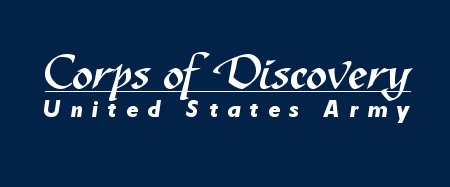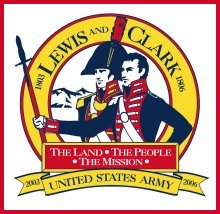The U.S. Army and the Lewis & Clark
Campaign Plan
Annex B: Terms and Definitions
General. The following terms and definitions are used throughout
the Campaign Plan:
1. Federal Agency. Any federal agency or department,
military or civilian.
2. Federal Inter-agency MOU. The Memorandum of Understanding
agreed upon by participating Federal agencies and the National Lewis
and Clark Bicentennial Council in October 1998, and those agencies that
signed it afterwards. Hereafter referred to as MOU.
3. Lewis and Clark Trail Heritage Foundation. A
nonprofit institution founded in 1969 and dedicated to teach, preserve,
and honor the Lewis and Clark Trail. In 1993, the Board of Directors
decided to establish a separate entity to oversee the commemoration
activities during the Bicentennial period, 2003-2006. Hereafter referred
to as the Foundation.
4. National Lewis and Clark Bicentennial Council.
The National Council for the Lewis and Clark Bicentennial is a nonprofit,
private organization established in 1996 by the parent organization,
the Lewis and Clark Trail Heritage Foundation. As a signatory to the
MOU, it represents the link between the private sector of commercial
corporations, business, individuals, and government agencies. Hereafter
referred to as the Bicentennial Council.
5. National Commemorative Events (NCEs). The MOU
authorizes the Bicentennial Council to designate and schedule all NCEs.
Official commemorative events include those conducted by a federal agency,
or by a non-federal organization, with active U.S. Government support
or participation.
6. Local Events. Commemorative events conducted
by a local federal, tribal, state, or municipal agency, or by affiliated
private groups.
7. US Army Lewis and Clark Executive Council (LCEC).
A council chaired by the Director of the Army Staff or his representative,
consisting of senior leaders or staff officers from the Army Components,
MACOMS, or other Army agencies involved in the commemoration.
This council meets semi-annually to provide guidance and establish policy
for all commemorative activities involving the US Army or any of its
subordinate commands or agencies. The Executive Council will report
all major decisions and plans to the Secretary of the Army or CSA as
necessary. Hereafter referred to as Executive Council or LCEC.
8. Army Executive Agent. The commemoration Executive
Agent for the US Army is the Chief, US Army Center of Military History.
9. US Army Lewis and Clark Advisory Group (LCAG).
A working group at the middle staff level that plans, recommends, and
executes decisions and policies from the Executive Council. The
LCAG meets at least quarterly to review Commemoration issues and advise
the LCEC or Executive Agent on matters. Hereafter referred to as the
Advisory Group or LCAG.
11. US Army Lewis and Clark Commemorative Office (LCCO).
An office established at CMH tasked with coordinating the US Army’s
commemoration efforts. The office will stand up on Active Duty
July 01 and will remain in operation until July 07. Hereafter
referred to as the Commemorative Office or LCCO.
12. Command. The term includes Reserve Components,
MACOMS, installations, subordinate commands, Field Operating Agencies,
and all other Army entities, units or organizations.
13. Lewis and Clark Task Force. A planning, organizing
and liaison office at the command level.





